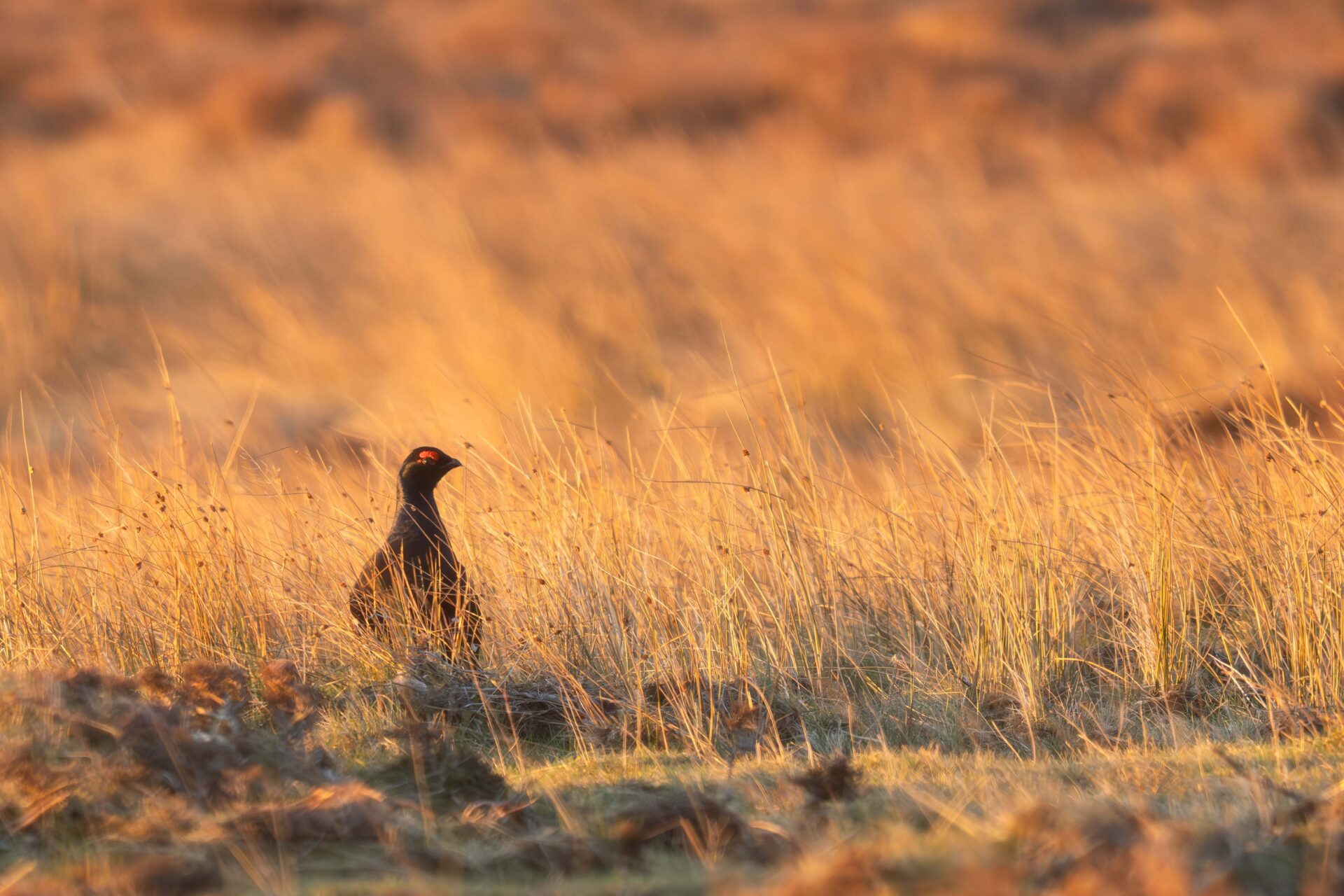When we think of a ‘typical’ dawn chorus I am sure that most people imagine the sounds of garden birds streaming through their bedroom window, providing a lovely springtime alarm clock, or perhaps warblers and tits singing in the woods on a morning dog walk. However, for me the most impressive and unique dawn chorus is one that is not so often heard. I am talking about the eerie sounds of the Scottish moors, just as the sun rises.
For the past couple of years some of the Aigas rangers have been helping the RSPB and Trees for Life in their monitoring of black grouse (Lyrurus tetrix) populations in the Strathglass and Glenmoriston area, and I have had the responsibility of surveying an area of moorland just up behind the Aigas Estate. Now these surveys are not for the faint of heart; setting your alarm for three in the morning and heading out in the dark through boggy moorland on foot is probably not how the average person would choose to spend their weekend! But I believe the average person is missing out: in my eyes this is a truly magical experience. This is the story of one such survey that I carried out in early April, where black grouse were just one element of a really special morning.
Sunrise was shortly after six, which meant that I had to begin my survey shortly after five. Before I could even start I had an hour of walking in the dark, with only the light of the moon to guide me. At first this is up an old stalking track, which isn’t too difficult, but then to reach the site I was aiming for I have to cross the peat bog, which is far more challenging! By the time I arrive at a slight hillock in the middle of the moor, which will be my vantage point from which to scan the area, I am absolutely soaking wet. It isn’t raining but unfortunately my ability to see in the dark has betrayed me and I have stepped in deep peaty pools of water more times than I can count. I really should have listened to my mum and eaten more carrots as a child!
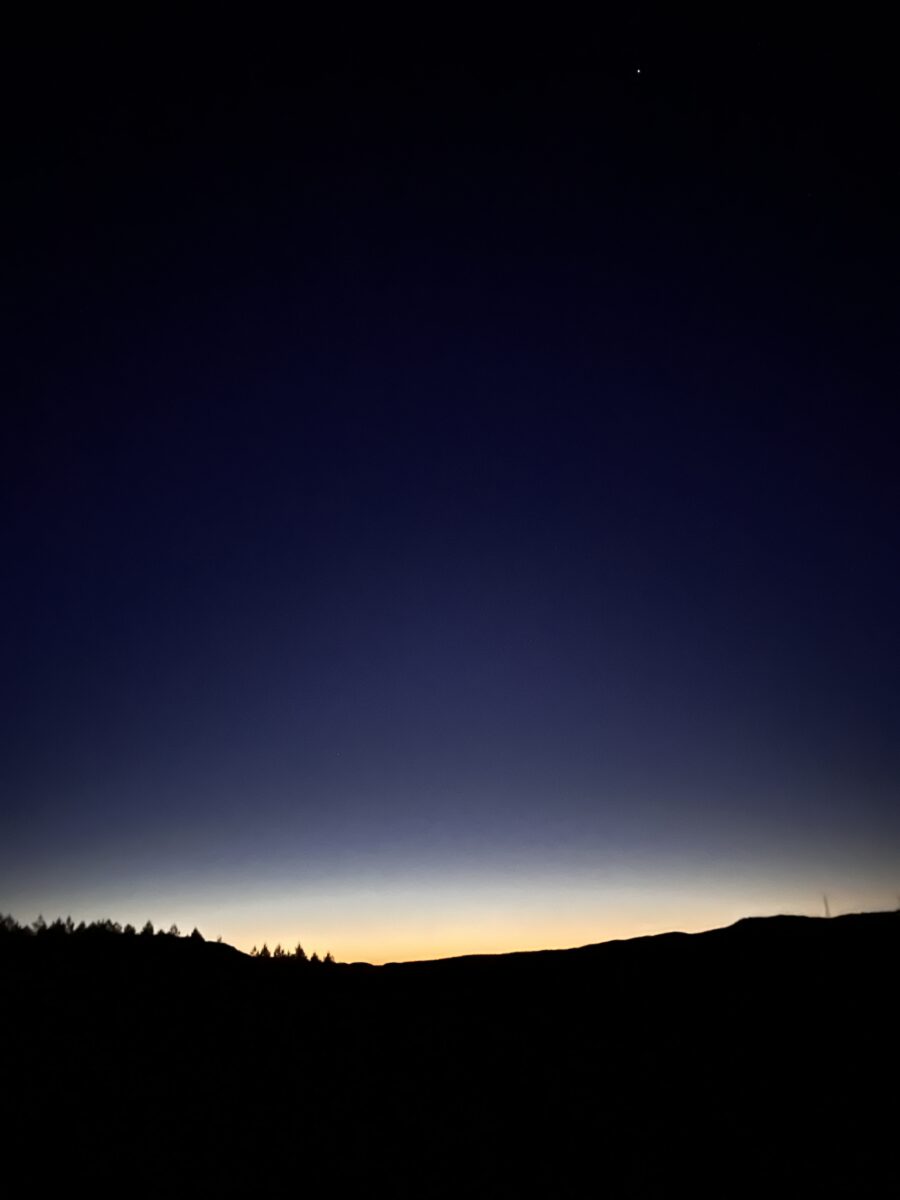
As I lay down and settle in amongst the heather it is completely silent. I feel completely alone on the moor, and it seems totally devoid of life. It is certainly quite eerie but also very beautiful. Then suddenly that all changes, as I begin to hear the ‘bubbling’ call of grouse in the distance. At first it is just one but in a matter of seconds I can tell that there are more: the soft bubbling is interspersed with loud scratchy shrieks. The grouse lek has clearly begun!
During the springtime, male black grouse have exceptionally high testosterone levels and will compete every morning around sunrise in something called a ‘lek’. Essentially a group of males (usually all relatives) will gather and attempt to assert dominance to attract the attention of females, who hang around in the scrub watching them. These grouse will spend their days feeding together and so it would seem like they all get along. Although they may actually ‘fight’, it is rare that it does get physical: they spend their time being loud and puffing up their chests, threatening each other but rarely actually engaging with their opponents. I like to compare this to a group of men getting drunk in a bar, acting tough and threatening to fight but really they are just trying to show off to the ladies watching from the sidelines! From my experiences with grouse, just like in a bar, the females usually don’t seem too impressed!
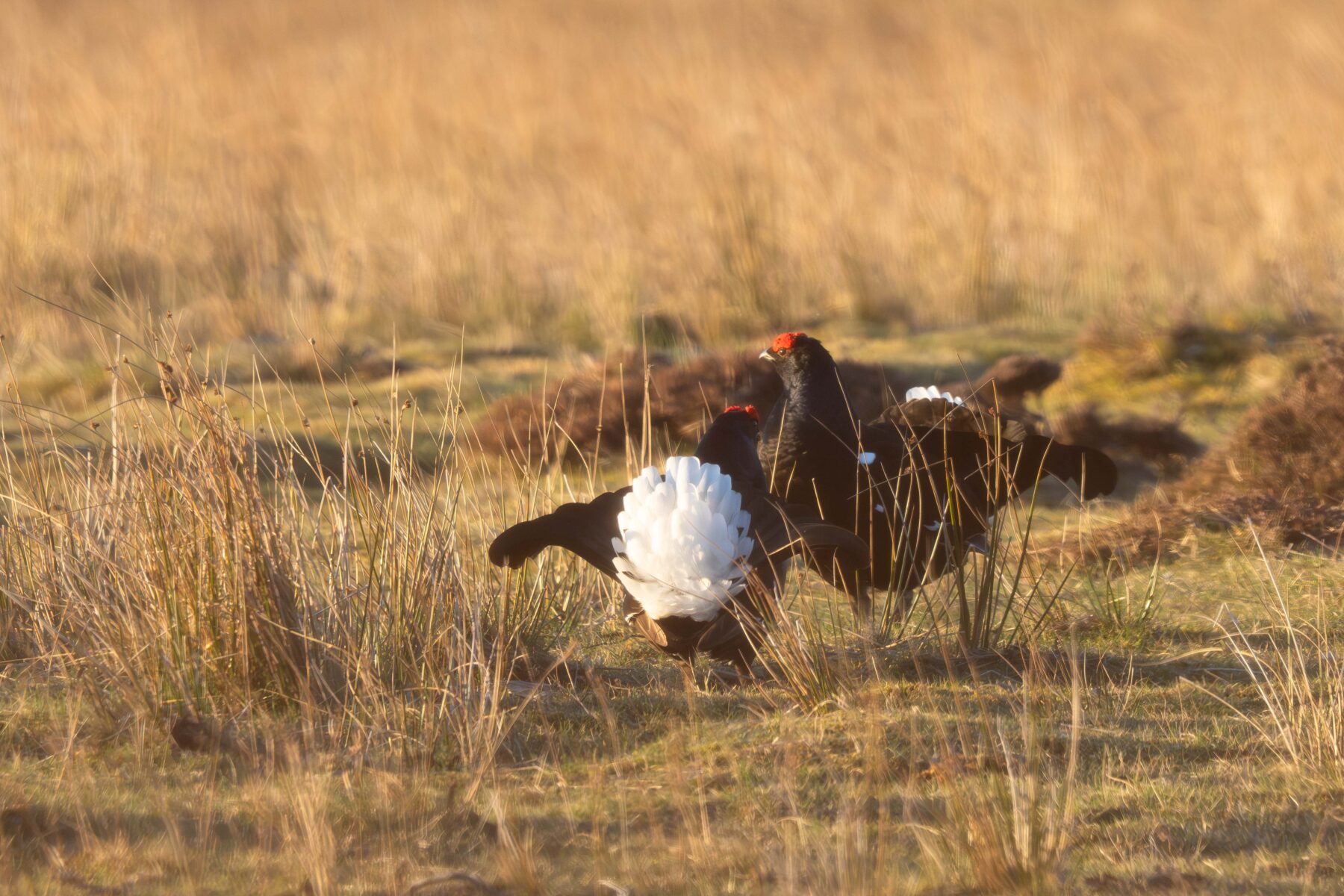
I scan the area in front of me, but I am still in near darkness apart from a mere suggestion of light coming from the East. I see a dark shape way off on the hillside: could this be my first grouse? No, it’s just a darker patch of heather. Wait! That bit of heather just moved! And so did that one! I have found the lek. Now my eyes are adjusting I can work out that there seem to be eleven little black shapes hopping around each other. This is getting exciting! As I pull out my notepad to make note of what I have seen, however, I am distracted by yet another iconic sound of the Scottish moor. A humming noise flies past way up over my head, almost sounding like a giant bumblebee. This is a common snipe (Gallinago gallinago) performing its famous ‘drumming’ display, where it fans out the feathers in its wings and when it reaches high speed they vibrate, creating this amazing sound. The dawn chorus has definitely begun.
Over the course of the next couple of hours, whilst my attention was primarily on the grouse (I have now seen that there are fourteen birds) I am constantly distracted by the sounds of the moor. A Eurasian wren (Troglodytes troglodytes) makes its shrill call from a nearby hummock whilst meadow pipits (Anthus pratensis) begin to sing their descending ‘zi-zi-zi-zi-zu-zu-zu-zu’ song. Although it may not be as impressive a song as others, I enjoy the throaty clicking of the stonechat (Saxicola rubicola); from my prone position I still haven’t seen him but it sounds like he is just over my shoulder. In contrast to the silence of when I first arrived the moor is now well and truly alive, and just by listening I am understanding more and more about the behaviours of these different species.
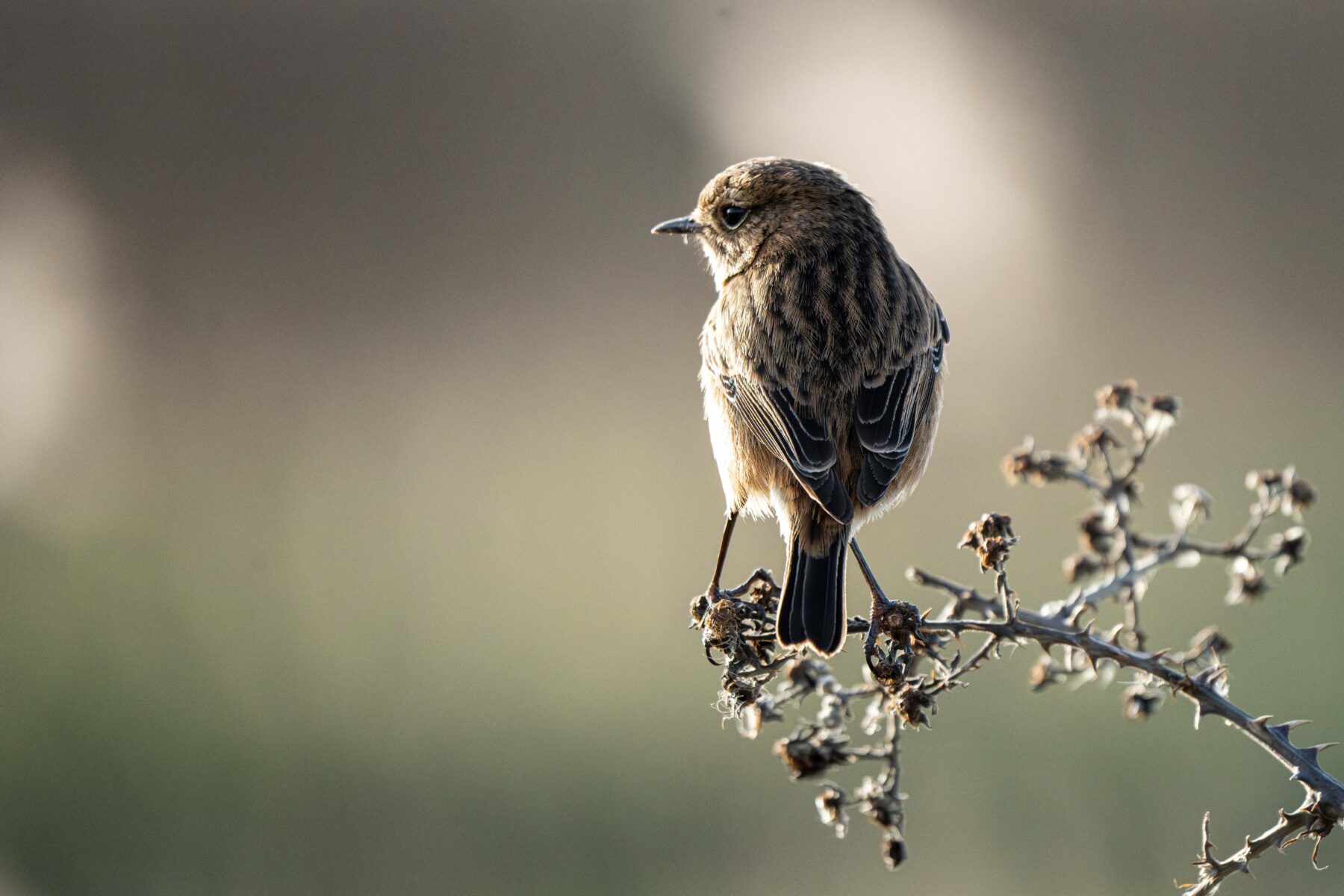
Whilst much of what I am hearing is indicative of the beginning of the breeding season and brings a sense of excitement, I am hit with a tinge of sadness as I hear the light honking of a skein of pink-footed geese (Anser brachyrhyncus) way up above me. These birds are leaving our shores and heading to Iceland and Greenland for the summer. As much as I love the seasonality of British birding, I think I will always be a little sad at the departure of our geese every spring. I just have to remember that come September that same sound will be indicative of their return, when they will replace the warblers, cuckoos and ospreys that head south for the winter.
The sun is now casting a beautiful golden light over the lek site which seems to be the cue for the grouse to disperse. They all fly off in unison and will spend the rest of their day feeding together on the hillside, with all pretence of aggression put to one side until tomorrow morning. My survey is finished and I’m starting to feel a bit peckish. It may only be seven o’clock but I have already been out for over three hours. As I start to make my way back down from my hillock, with better visibility allowing me to hop over all those pools which I had stepped in on the way up, the sounds of the moor are still at full volume and I am starting to see those stonechats and pipits that I was only able to hear earlier on. However, there is one final treat in stall for me as I hear a different call, one that I wasn’t expecting: the siren-like ‘clu-wee clu-wee clu-wee’ of a greenshank (Tringa nebularia) flying past. All the other birds that I have heard and seen this morning have been ones that I knew were found on this patch of moorland and whilst I will always be thrilled by the sound of snipe or stonechats, discovering that greenshanks must be breeding in this area is the cherry on top of an amazing morning.
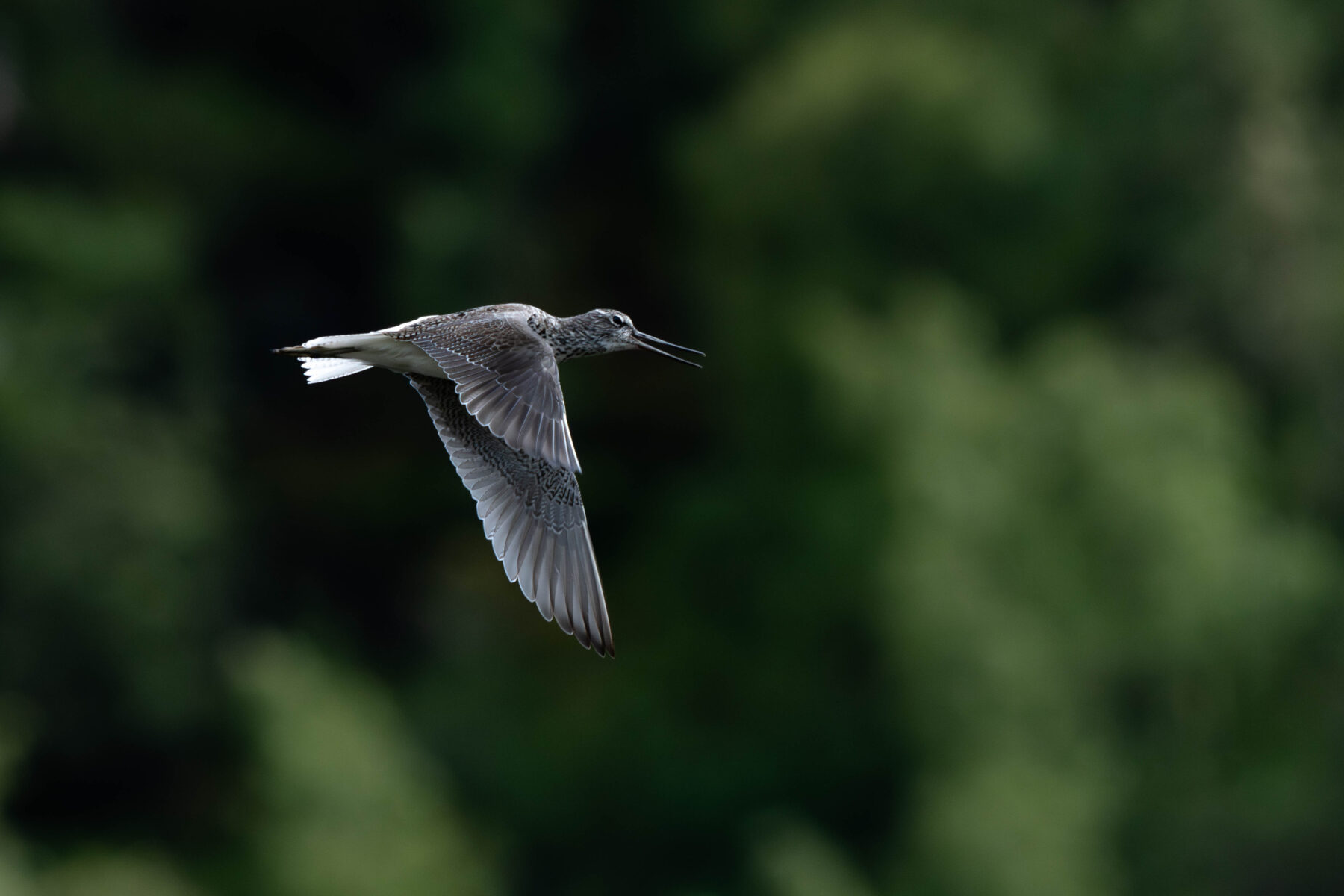
One of the things that I really love about birding in Scotland is the variety, and to me the joy of experiencing something like this really shows how the idea of the dawn chorus and of birdsong can be so different based on where you are. I will be carrying out another survey in this same spot over the coming weeks and will now be listening out for grasshopper warblers (Locustella naevia) and cuckoos (Cuculus canorus) which should be arriving around this time. Earlier in this story I described the survey as being a “responsibility” but for me it is a privilege; to be able to stop in silence and share the environment with wildlife all around me is honestly one of the great pleasures in my life.
words and photography by Jacob New

